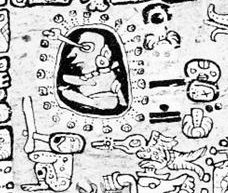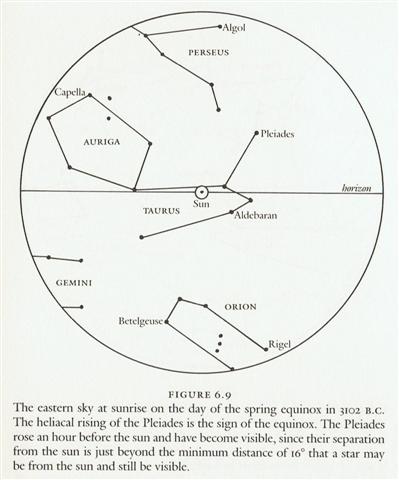The stars which at a given date rose together with the Sun could not be observed. Any attempt to do so would have resulted in 'burnt eyes' (maka wela in the Hawaiian dialect of the Polynesian language): ... The eye is the symbolic site of subjection. Valeri observes that: 'The two sentiments that permit the transcendence of the self are, according to Hawaiians, desire and respect. One and the other are called kau ka maka, literally, 'to set one's eyes on' ... 'To see' (ike) in Hawaiian (as in French or English) is 'to understand', but it is also 'to know sexually'. Witness to the order, the world of forms generated by the chief, the eye, is the sacrifice of those who violate that order. The left eye of the slain tabu-transgressors is swallowed by Kahoali'i, ceremonial double of the king and living god of his sacrificial rites. Like the sun, chiefs of the highest tabus - those who are called 'gods', 'fire', 'heat', and 'raging blazes' - cannot be gazed directly upon without injury. The lowly commoner prostrates before them face to the ground, the position assumed by victims on the platforms of human sacrifice. Such a one is called makawela, 'burnt eyes'. So the astronomer instead sat down in the nights reaching out with his eye for the less powerful 'fires':
Indirectly the position of the Sun could be deduced from looking at the face of the Full Moon, because the stars in her background would be diametrically opposite to the stars in the vicinity of the Sun: ... In ancient times the priest-astronomers (Brahmans) determined the recurrence of the solstices and equinoxes by the use of the gnomon. Later they developed the Nakshatra system of star reference to determine the recurrence of the seasons, much as the Greeks used the heliacal rising of some star for the same purpose. An example of the operation of the Nakshatra system in antiquity can be seen in figure 6.9
Therefore I have in my tables with black text presented the 'nightside' (nakshatra) stars half a year away from the heliacal (in blue) stars. The row immediately below the top row in my tables contains the dates (in rongorongo times) when the nakshatra (black) stars rose heliacally and these dates are half a year later than the heliacal ones:
I have above adjusted down the dates for 'the First Point of Aries' (the March equinox) with 0.4 * 71 = 28 years and as I suggested earlier. In glyph line Ca3 we can find the heliacal stars which ruled the 2nd Arab manzil Al Dabarān:
Although the manzil name Al Dabarān closely resembles the star name Aldebaran (α Tauri) I think the Arabs used γ Tauri (Hyadum I) as their point of reference. Hyadum I formed a pair together with Hyadum II (δ) The redmarked stars are those which rose with the Sun at positions which (according to my star list) had the fraction 0.4 in their right ascension values and none of the other stars listed at Al Dabarān had this characteristic. | |||||||||||||||||||||||||||||||||||||||||||||||||||||||||||||||||||||||||||||||||||||||||||||||||||||||||||





